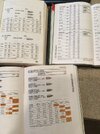If you’re wanting to duplicate factory velocities or wanting the flattest shooting round possible, at what point do you stop? What signs are you looking for from an AR fired case? Primer appearance is unreliable. What about ejector smears?
I understand many are just looking for an accurate load and velocity is a distant second consideration, but that’s not what I’m talking about. The advice is “Start low and work up slow”. But work up to what? What am I looking for? I’m guessing very few of us have a blade micrometer to measure case expansion in the extractor groove.
I understand many are just looking for an accurate load and velocity is a distant second consideration, but that’s not what I’m talking about. The advice is “Start low and work up slow”. But work up to what? What am I looking for? I’m guessing very few of us have a blade micrometer to measure case expansion in the extractor groove.


